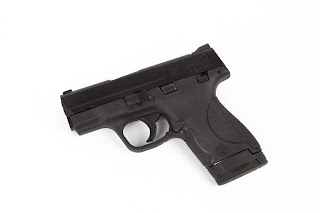The G36 has been in service with the German Army (Bundeswehr) since 1997. While the G36 wasn't the first rifle adopted by a major military that made extensive use of polymers, it was certainly one of the more popular designs. It has been used by at least 30 different countries in some capacity making it a successful design on the military small arms market.
Despite HK's sterling reputation for quality the rifle isn't universally loved. Now a German newspaper is reporting that the German Army is aware of an interesting problem. Once the rifle heats up with use, the accuracy degrades so much that it's ineffective past 200 meters.
An internal document intended for the Secretary of Defense stated that once the rifle gets hot enemy targets past 200 meters can not be safely engaged. The document states that the problem represents a significant deficiency in the G36's design. The military is recommending that troops allow their rifles to cool in firefights to help deal with the problem. They warn that if troops aren't careful, the G36 can completely fail. The Armed Forces Association, a German soldiers' interest group, is urging a speedy resolution to this problem.
What I find interesting is that this problem is just now coming to light. Has the German Army covered up this problem? I can't imagine that it's taken over a decade of fighting in the Middle East before this problem to come to light.
Despite HK's sterling reputation for quality the rifle isn't universally loved. Now a German newspaper is reporting that the German Army is aware of an interesting problem. Once the rifle heats up with use, the accuracy degrades so much that it's ineffective past 200 meters.
An internal document intended for the Secretary of Defense stated that once the rifle gets hot enemy targets past 200 meters can not be safely engaged. The document states that the problem represents a significant deficiency in the G36's design. The military is recommending that troops allow their rifles to cool in firefights to help deal with the problem. They warn that if troops aren't careful, the G36 can completely fail. The Armed Forces Association, a German soldiers' interest group, is urging a speedy resolution to this problem.
What I find interesting is that this problem is just now coming to light. Has the German Army covered up this problem? I can't imagine that it's taken over a decade of fighting in the Middle East before this problem to come to light.









